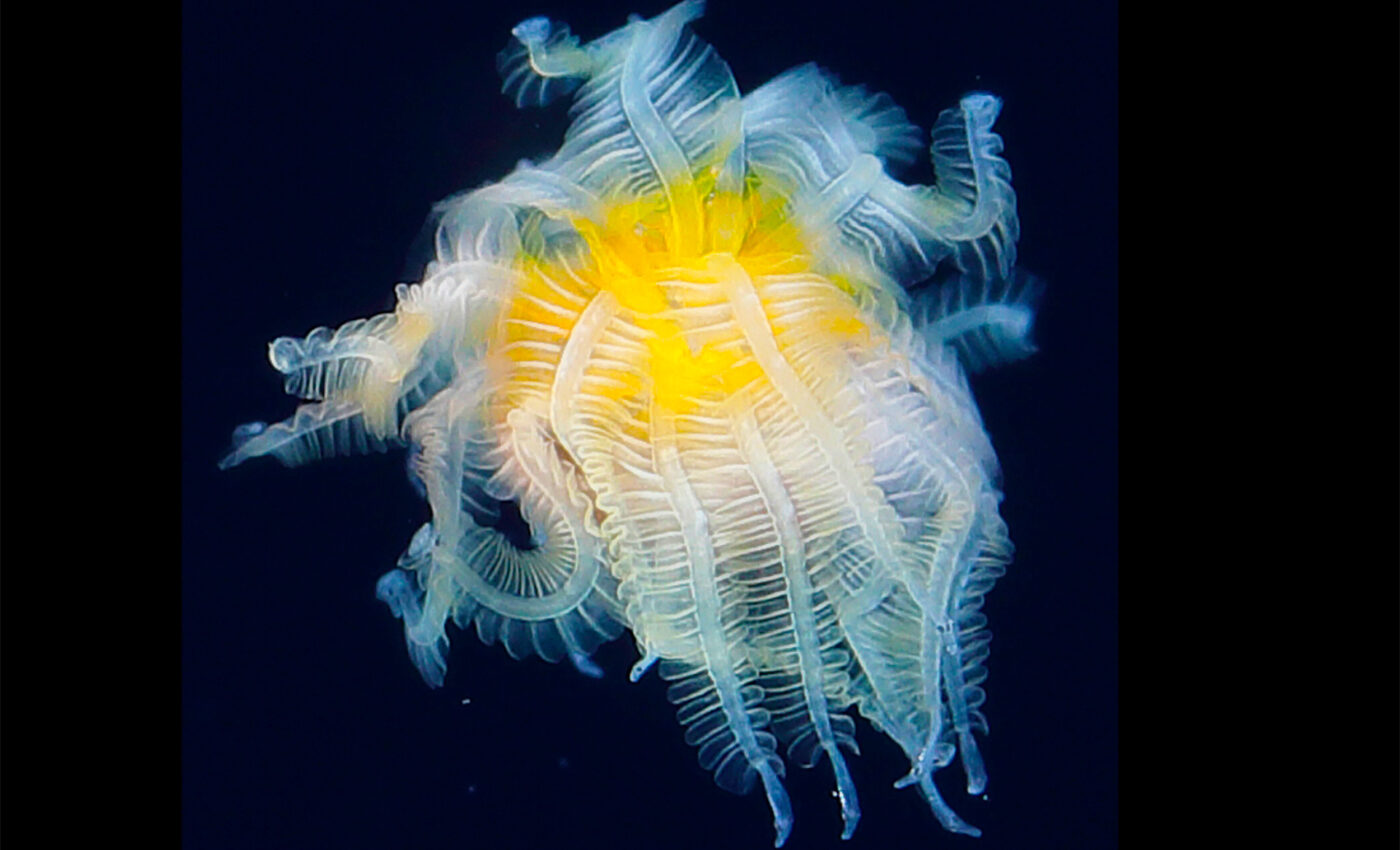
Bizarre sea creature, Cercariae, is actually a colony of hundreds of parasitic worms
In 2018, underwater photographer Ryo Minemizu spotted an alien-like sea creature swimming off the coast of Okinawa. When the images were posted online, hundreds of exports struggled to identify the bizarre animal.
Minemizu collected a single sample of the animal and stored it in a formaldehyde solution at room temperature. Two years later, an international team of scientists performed morphological and genetic studies to identify the area creature, which was about the size of a ladybug.
The experts, led by neurobiologist Igor Adameyko of the University of Vienna, have finally solved the mystery. The team determined that the animal, Cercariae, was actually a colony of two types of parasitic worms swimming as one.
Cercariae – Parasitic flukes
“After microscopy-assisted exploration of the unstained specimen, we established that the aggregate is composed of two types of cercariae, which are henceforth referred to as the “sailors” (large ones) and the “passengers” (small ones),” wrote the study authors.
“The single aggregation we studied included about 20 sailors and over 1,000 passengers. Passenger cercariae were arranged in a hemisphere, with their tails forming the bulk and their bodies at the periphery. The tail tips of the sailor cercariae were anchored at the flattened side of the hemisphere, resembling snake hair on the Gorgon’s head.”
“The passengers were much smaller volume-wise, as compared to large sailors. The aggregate resembles a colony, being finely structured and optimized for functional performance at different levels.”
According to the researchers, the parasites had essentially created a prey-like swimmer that would infect the intestines of an unsuspecting host (see image).
Moving aggregation
“It is the sailor cercariae that provide the movement of the aggregation by wiggling their huge tails with wide lateral fin-folds,” explained the experts.
“At the initiation of swimming, only one or few sailors start to wiggle tails, and the others join them soon after. Sailors have different collective activity regimes, as they can beat their tails in synchrony, causing pulsing or jumping movements of the aggregate, or asynchronously via alternating beating, which provides for a smooth motion without jumping patterns.”
“The beating activity of sailors involves coordinated relaxation phases that occur in cercariae located exclusively at one specific side of the aggregate. When some of the sailor cercariae do not move, they are stretching behind, and their tails appear relaxed. Thus, the activity of sailors on one side and their inactivity on the opposite side can define the directionality of swimming.”
“Altogether, the aggregate acts like a heteromorphic colony with integrated structure and coordinated behavior. We should note that studying a single specimen does not allow us to estimate the variations in locomotion patterns or in proportion between sailor and passenger cercariae.”
Cercariae have astonishing strategies
The researchers pointed out that parasites have evolved a variety of astonishing strategies to survive within their hosts.
They noted that the discovery described in this study provides a unique example of how morphologically and functionally heterogeneous individuals of the same species cooperate to build colonial organisms for the purpose of infection.
The research is published in the journal Current Biology.
Image Credit: Ryo Minemizu
—
Like what you read? Subscribe to our newsletter for engaging articles, exclusive content, and the latest updates.
—
Check us out on EarthSnap, a free app brought to you by Eric Ralls and Earth.com.













